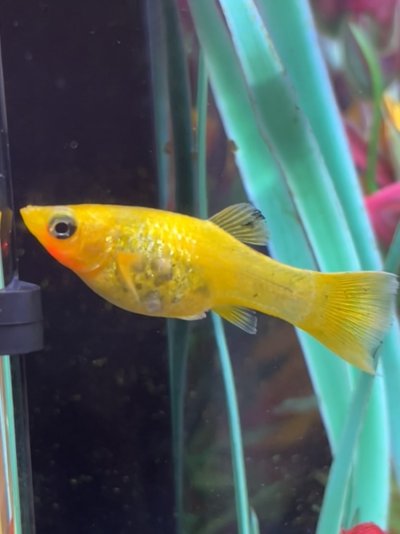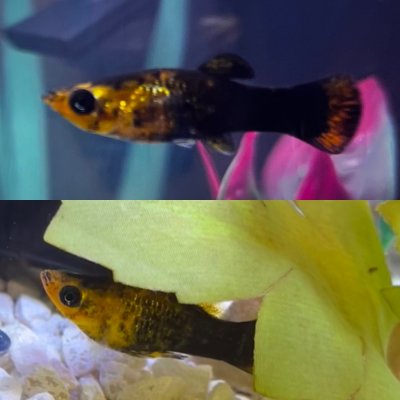Hello!
This weekend I started noticing these spots on my female Molly, and they seem to be getting worse. Do you have any ideas what it might be and how to treat it?
I currently have her with what I thought was another female (but as of this weekend think may, in fact, be a late-blooming male) in a small (5g) tank. The tank is fully cycled, and we’ve had them for about three months. I do a 50% water change conditioned with Seachem Prime once a week to keep the nitrates low.
I do realize the tank is too small for them but don’t currently have the ability to upsize the tank so am trying to make them as happy and comfortable as possible until I can. I also know that it’s generally better to keep Molly fish in larger groups, but because of our small tank I hadn’t. When I thought we had two females, I thought they’d be alright just the two of them, but now that the other fish seems to be male I’m less sure.
I’m wondering if the male is causing problems. I’m fairly certain she’s heavily pregnant, and just recently I’ve noticed him picking on her more. Could this be wounds from him picking on her? Since I got the tank cycled they’ve seemed content and gotten along really well until recently.
If these are disease spots, how should I treat them? If wounds, would I be better to get a second female for the tank or to keep just the two since I can’t get a bigger tank just yet?
This weekend I started noticing these spots on my female Molly, and they seem to be getting worse. Do you have any ideas what it might be and how to treat it?
I currently have her with what I thought was another female (but as of this weekend think may, in fact, be a late-blooming male) in a small (5g) tank. The tank is fully cycled, and we’ve had them for about three months. I do a 50% water change conditioned with Seachem Prime once a week to keep the nitrates low.
I do realize the tank is too small for them but don’t currently have the ability to upsize the tank so am trying to make them as happy and comfortable as possible until I can. I also know that it’s generally better to keep Molly fish in larger groups, but because of our small tank I hadn’t. When I thought we had two females, I thought they’d be alright just the two of them, but now that the other fish seems to be male I’m less sure.
I’m wondering if the male is causing problems. I’m fairly certain she’s heavily pregnant, and just recently I’ve noticed him picking on her more. Could this be wounds from him picking on her? Since I got the tank cycled they’ve seemed content and gotten along really well until recently.
If these are disease spots, how should I treat them? If wounds, would I be better to get a second female for the tank or to keep just the two since I can’t get a bigger tank just yet?


